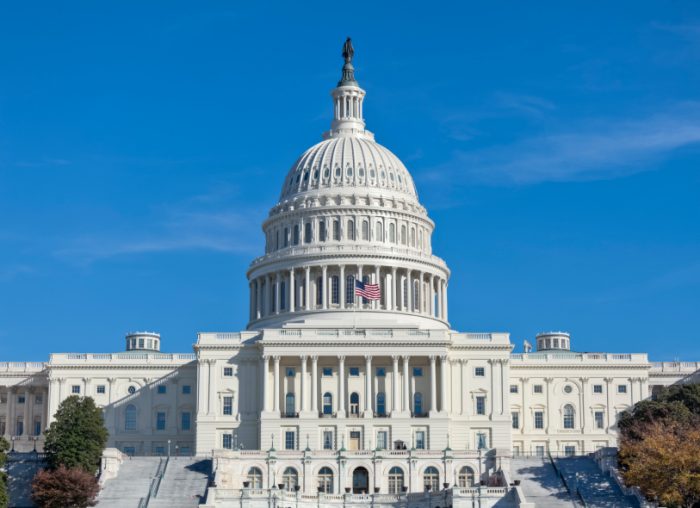Jason Snyder
SAMHSA Report Begs Questions About Definition of Recovery, Purpose of Addiction Treatment
By Jason Snyder, Director, Substance Use Disorder Treatment Services, BH Division, RCPA
In September 2023, the Substance Abuse and Mental Health Services Administration (SAMHSA) released a report, “Recovery from Substance Use and Mental Health Problems Among Adults in the United States.”
Although the definition and concept of recovery from addiction have been morphing for some time, the self-reported data contained in the report, coupled with SAMHSA’s definition of recovery, lays out starkly that what is considered recovery today is far different from what it has been considered historically. In some ways, it begs the question, then, “What is the purpose of addiction treatment?” What are the implications for addiction treatment providers, who for decades have operated with a mission of helping their patients stop their use of drugs and alcohol?
Using data from the 2021 National Survey on Drug Use and Health (NSDUH), SAMHSA’s report shows that 70 million adults aged 18 or older perceived that they ever had a substance use or mental health problem. For substance use specifically, of the 29 million adults who perceived that they ever had a substance use problem, 72 percent (or 20.9 million) considered themselves to be in recovery or to have recovered from their drug or alcohol use problem (see SAMHSA’s press release).
Of the 72 percent who considered themselves to be in recovery or to have recovered from their drug or alcohol use problem:
- 65 percent reported using alcohol in the past year;
- 68 percent reported using marijuana in the past year;
- 60 percent reported using cocaine in the past year; and
- 61 percent reported using hallucinogens in the past year.
Curiously, it doesn’t appear that respondents were asked whether they used illicit opioids in the past year.
To the traditional addiction treatment provider and many in the recovery community today, recovery and drug and alcohol use can’t co-exist. One possible but unlikely explanation for the SAMHSA-reported data is that all of the respondents who identified as being in recovery but having used drugs or alcohol in the past year is that their recovery began within the last year. This would presume that their definition of recovery includes abstinence. But this is not likely. Consider SAMHSA’s definition of recovery:
“Recovery is a process of change through which individuals improve their health and wellness, live a self-directed life; and strive to reach their full potential.”
No mention of abstinence from drugs and alcohol. What this means is that for millions of people, recovery can and does include moderated use of drugs and alcohol.
In 2004, SAMHSA’s Center for Substance Abuse Treatment said, “Treatment for substance use disorders is designed to help people stop alcohol or drug use and remain sober and drug free. Recovery is a lifelong process.” Twenty years later, it’s a far different message coming from SAMHSA.
As recently as 2019, the Pennsylvania Certification Board defined recovery as highly individualized, requiring abstinence from all mood and mind-altering substances, and may be supported by using medication that is appropriately prescribed and taken.
Talk about evolution and conflict.
Nora Volkow, director of the National Institute on Drug Abuse, said “Healthcare and society must move beyond this dichotomous, moralistic view of drug use and abstinence and the judgmental attitudes and practices that go with it.”
So what does this mean for addiction treatment providers? What, then, is the purpose of addiction treatment? One managed care organization in Pennsylvania recently talked about the purpose of addiction treatment in much the same way as SAMHSA defines recovery, addressing health, home, purpose, and community. This would seem to mean that providers are now expected to address not only addiction but myriad social determinants of health as well. In fact, it is what payers expect providers to do today.
This is a sea change. The addiction treatment system was not built in this way. This is not to say that it is not evolving or cannot evolve along with the definitions of treatment and recovery. But to do so will require much broader systemic change than philosophical and cultural changes within addiction treatment organizations. Regulation and payment structure must also change to reflect the changing expectations and demands placed on providers.
More Than 300 Recovery Houses Now Licensed In Pennsylvania
The Pennsylvania Department of Drug and Alcohol Programs (DDAP) announced today that 312 recovery houses are now licensed throughout the commonwealth.
Since the licensure program began, DDAP has provided hands-on technical assistance to recovery house owners and continues to work individually with applicants to ensure accurate submissions when applying. DDAP developed and now offers a new provider workshop that has helped to increase accuracy of applications, which further streamlines and expedites the licensure process.
The purpose of DDAP’s recovery house licensure program is to help empower sustained recovery for individuals with substance use disorder by ensuring a network of safe drug and alcohol recovery houses across Pennsylvania.
A listing of licensed recovery houses as well as information regarding the licensing application process can be found on the DDAP website.
RCPA Becomes Leading Advocate for PA Methadone Providers
Shapiro Administration Highlights “One-Stop-Shop” Services For SUD Treatment, Recovery In Luzerne County: RCPA Member Children’s Services Center Referenced
RCPA Urges Provider Members to Submit Recommendations for BH Council, Advisory Committee
Gov. Shapiro Signs Executive Order Creating Behavioral Health Council
On Tuesday, Governor Josh Shapiro signed an executive order to create a Behavioral Health Council. The council aims to bring together state leaders, local governments, and community providers to develop a statewide action plan to address any gaps in access, affordability, or delivery of services, with the goal of removing silos across state agencies, health care providers, payers, state and local government sectors, and decreasing the wait time for services for Pennsylvanians in need.
Charged with setting the agenda for behavioral health under the Shapiro Administration, the council will be comprised of 33 members and include a diverse array of stakeholders with representation from state, county, and local governments, the provider community, advocacy groups, and individuals with lived experiences. A list of Council members is available online.
The executive order also creates an advisory committee that will share with the council industry knowledge, expertise, reports, findings, and feedback from the communities they serve to assist members in their work to improve the delivery of services. Read the complete press release.
National Council for Mental Wellbeing Announces Hill Day on October 18
The National Council for Mental Wellbeing is calling for support to address the ongoing mental health and substance use crises. They are organizing a virtual advocacy event called Hill Day on October 18 from 1:00 pm – 4:00 pm EST, where participants can urge elected officials to focus on key issues such as the behavioral health workforce shortage, establishing Certified Community Behavioral Health Clinics (CCBHC) into federal law, expanding access to substance use care, and investing in crisis care infrastructure. Register for the event today!
Save the Date: DDAP to Host 2023 Emerging Drug Trend Symposium

The Pennsylvania Department of Drug and Alcohol Programs (DDAP) will host the 2023 Emerging Drug Trend Symposium from 8:30 am – 4:30 pm on Thursday, November 9, at the Penn Harris Hotel in Camp Hill, PA. The symposium will provide attendees with valuable insights into three key areas: the latest trends in drug use within Pennsylvania, shifts in overdose patterns with a particular focus on increasing rates of overdose deaths in communities of color, and the exploration of best practices and innovative strategies to effectively respond to these emerging drug trends. Registration details and an agenda will be available soon.
Governor Shapiro Announces Juvenile Justice Week Proclamation
The Juvenile Justice Week proclamation, signed by Governor Shapiro, designates October 1–7, 2023, as Juvenile Justice Week, calling on Pennsylvanians, government agencies, institutions, and schools to raise awareness and understanding of juvenile justice. The proclamation highlights the mission and principles of Pennsylvania’s juvenile justice system. It emphasizes the importance of providing balanced attention to community protection, offender accountability, and the rehabilitation of juveniles within the system. The proclamation also underscores the principles of restorative justice, with a focus on repairing harm to crime victims and communities and ensuring that all parties involved, including victims and offenders, receive tangible benefits from their interactions with the juvenile justice system. Lastly, it emphasizes fair and unbiased treatment in all aspects within the system.
















